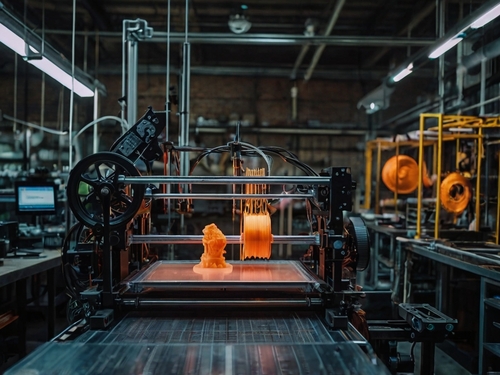The India 3D printing market is projected to experience a dynamic transformation by 2031, driven by technological advancements, increased industrial adoption, and government initiatives promoting digital manufacturing. This technology, also known as additive manufacturing, is evolving from a niche prototyping tool to a mainstream production method, impacting sectors such as healthcare, automotive, aerospace, and consumer goods in India.

Growth Drivers in the 3D Printing Market
One of the key trends in the India 3D printing market is the rapid adoption across diverse industries, particularly in healthcare and aerospace. In healthcare, 3D printing is being used for personalized medical devices, prosthetics, and implants. Surgeons are now leveraging 3D-printed models for pre-surgical planning, significantly enhancing procedural accuracy. Additionally, bio-printing has the potential to revolutionize tissue engineering, and ongoing research in India points to a future where custom organs could be created for transplant purposes.
The aerospace and defense industries are similarly benefiting from 3D printing technologies. By enabling the production of lightweight yet durable components, 3D printing is helping these sectors improve fuel efficiency and reduce costs. The ability to create complex parts with minimal material waste aligns well with the sustainability goals of many aerospace companies operating in India.
Moreover, the automotive sector is utilizing 3D printing to accelerate product development cycles. Custom parts and rapid prototyping are becoming more common, allowing manufacturers to design and test components in a fraction of the time it would take using traditional methods.
Government Initiatives and Policy Support
The Indian government’s “Make in India” initiative is a crucial enabler of the growth of the 3D printing market. By encouraging local manufacturing and technological innovation, the government aims to position India as a global leader in additive manufacturing. In line with this, the Ministry of Electronics and Information Technology (MeitY) has introduced policies to boost 3D printing adoption and enhance the country’s digital manufacturing capabilities.
In 2021, the government launched the National Strategy on Additive Manufacturing, which aims to position India among the top nations in the 3D printing domain by 2025. This strategy supports the development of 3D printing technologies across key sectors, ensuring India stays competitive in the global market. The policy also emphasizes the need for a skilled workforce, which has led to an increase in education and training programs focused on 3D printing.
Technological Advancements
The India 3D printing market is also being shaped by advancements in materials and printing techniques. Initially, the focus was primarily on plastics, but there is a growing demand for advanced materials such as metals, ceramics, and composites. This shift has opened up new opportunities in industries such as aerospace, automotive, and medical devices, where stronger, heat-resistant, and more durable materials are required.
In addition, multi-material 3D printing is becoming more prevalent, allowing the creation of complex products made from different materials in a single print. This capability significantly enhances product design flexibility and reduces the need for assembly.
The rise of large-scale 3D printing is another noteworthy trend. Indian companies are exploring the use of this technology for construction, where entire buildings or large sections can be 3D printed in a short amount of time. This could address India’s growing housing needs, providing affordable, sustainable solutions for residential construction.
Challenges and Opportunities
Despite its potential, the India 3D printing market faces several challenges. High upfront costs for industrial-grade 3D printers and materials remain a barrier for small and medium enterprises (SMEs). Additionally, while there is growing awareness of 3D printing, many companies are still hesitant to adopt the technology due to concerns over the return on investment and the perceived complexity of integrating it into their existing processes.
On the flip side, opportunities are abundant, particularly in sectors like healthcare, education, and construction. For instance, the education sector is integrating 3D printing into its curriculum, fostering innovation and helping create a future workforce proficient in additive manufacturing technologies. This development could help bridge the skills gap and accelerate the widespread adoption of 3D printing in India.
Conclusion
The India 3D printing market is set to witness substantial growth by 2031, driven by technological advancements, expanding industrial applications, and government support. While challenges such as cost and awareness remain, the increasing demand for innovative, sustainable manufacturing solutions positions 3D printing as a game-changer for India’s economy. With ongoing developments in materials, printing techniques, and large-scale applications, India is on the path to becoming a global leader in additive manufacturing.
No responses yet